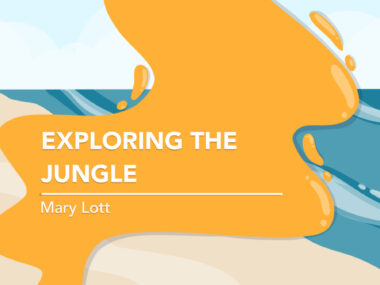A day in the life of a cold agglutinin disease patient
Managing fatigue and planning rest breaks are key
Written by |

Pokey was nudging my hand, forcing me into consciousness. He was rolling his eyes, dancing around, and almost crossing his legs. “Get up, Mom! I have to go out.”
Pokey is my dog. I wish he understood that on Saturdays humans don’t have to get up as early as on workdays. The schedule’s changed, and we can be more leisurely.
I tied on my bathrobe, grabbed the keys to the back door, and lurched through the kitchen to let him out. On my way back to bed, I tried to keep my eyes closed and not think about anything. That’s my best trick for getting back to sleep. It didn’t work.
I couldn’t help myself. I opened one eye and looked at the clock. It was 7 a.m.! Book club coming at 10! Time’s a-wasting.
Why I plan the way I do
I plan all my activities with my cold agglutinin disease (CAD) in mind. Even a simple event like a book club meeting is affected by the fatigue I experience. CAD makes me tired. I have difficulty staying focused.
This fatigue isn’t sleepiness. It’s more like my insides have turned into a heavy sludge. Moving from room to room feels like weights are attached to my ankles and wrists. If I force myself to be active when I don’t have enough fuel to get started, I grow even more tired.
When I taught sixth grade, I’d plan “brain breaks” to give students time to stop and refocus their energies. Then the class could continue their work refreshed. Now I plan what I call “day breaks” into my routine for the same reason. After a break, I can focus on activities from my to-do list.
Book club meeting
Waking up fully was the first item on my list. Back in the kitchen, after letting Pokey out, I filled a glass with ice. I have bottles of Coke Zero next to my bed, so that’s where I headed. I planned a half-hour to peruse current events and check messages, which I do every day in the comfort of my air-conditioned bedroom.
I started off by listening to the comforting sound of the fizzy drink gurgling over the ice. Raising my glass toward the window, I admired the shades of amber made by sunlight coming through and diffusing it in different directions through my drink. I find this slight action delightful and calming. The sameness of an enjoyable breakfast was juxtaposed with reading jarring current events.
After a half-hour of this activity, I began my chores. I started the laundry. I set out breakfast for the two boys living with us. Then I organized the porch and the living room, where the club would meet. That took the most time.
That brought me to 8:30. I plan each day in half-hour increments, alternating surfing the internet with actual work. The next spurt of activity saw me prepping the television for my presentation, along with setting out glasses and lemonade for refreshments. Everything was ready by 9 a.m., leaving an entire hour to rest before the meeting.
At 10 a.m., the ladies arrived. It’s a small book club, with only six members, but I prepare for my presentation as if there were 300. The book being discussed this day was one that changed my life when I first read it: “Evangelism and the Sovereignty of God” by J.I. Packer. It has only 122 pages, but Packer poses a lot of propositions for discussion. An hour and a half later, the meeting ended.
The rest of the day
I immediately fixed another Coke Zero, grabbed a hamburger patty for lunch, and headed for bed. I rested and watched TV for three hours while I recovered. Of course, I supervised household activities by yelling out helpful commands such as, “Mike, find the boys. See what they’re doing and tell them to quit!”
In the afternoon, I did activities with half-hour or 45-minute breaks interspersed. I didn’t go shopping. I usually do little gardening. Supper was served at the normal time. It was a typical Saturday.
My nearest and dearest, my three children, told me years ago that I was “dull, boring, and hopelessly old-fashioned.” At the time, I embraced it as a high point of my biography. With CAD, I’ve raised it to a fine art.
Note: Cold Agglutinin Disease News is strictly a news and information website about the disease. It does not provide medical advice, diagnosis, or treatment. This content is not intended to be a substitute for professional medical advice, diagnosis, or treatment. Always seek the advice of your physician or other qualified health provider with any questions you may have regarding a medical condition. Never disregard professional medical advice or delay in seeking it because of something you have read on this website. The opinions expressed in this column are not those of Cold Agglutinin Disease News or its parent company, Bionews, and are intended to spark discussion about issues pertaining to cold agglutinin disease.






Leave a comment
Fill in the required fields to post. Your email address will not be published.